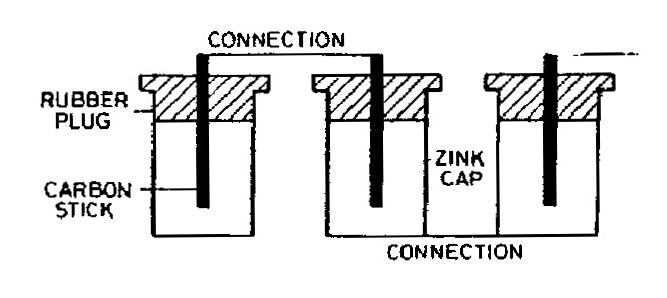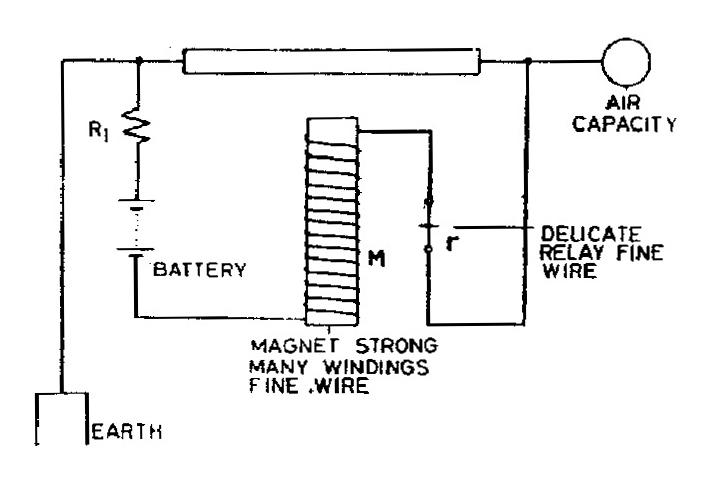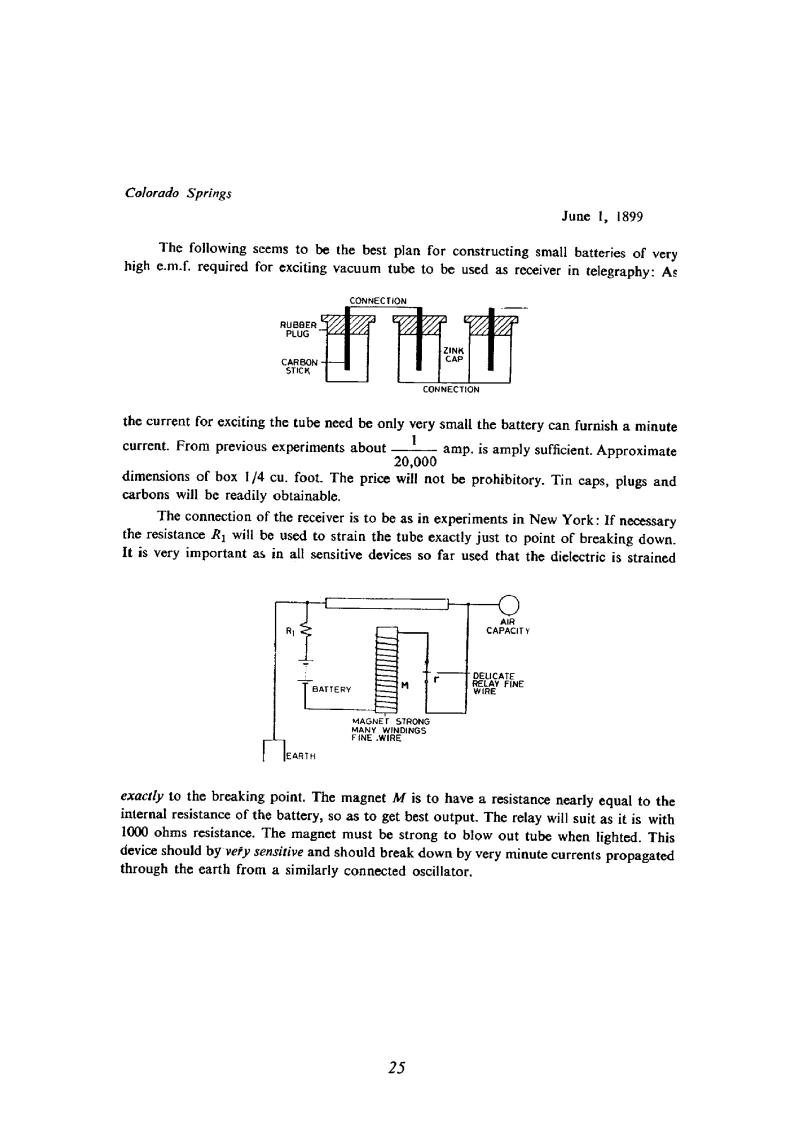
Nikola Tesla Books
Colorado Springs
June 1, 1899
The following seems to be the best plan for constructing small batteries of very high e.m.f. required for exciting vacuum tube to be used as receiver in telegraphy: As the current for exciting the tube need be only very small the battery can furnish a minute current. From previous experiments about $!{1\over20,000}$! amp. is amply sufficient. Approximate dimensions of box 1/4 cu. foot. The price will not be prohibitory. Tin caps, plugs and carbons will be readily obtainable.
The connection of the receiver is to be as in experiments in New York: If necessary the resistance R1 will be used to strain the tube exactly just to point of breaking down. It is very important as in all sensitive devices so far used that the dielectric is strained exactly to the breaking point. The magnet M is to have a resistance nearly equal to the internal resistance of the battery, so as to get best output. The relay will suit as it is with 1000 ohms resistance. The magnet must be strong to blow out tube when lighted. This device should by very sensitive and should break down by very minute currents propagated through the earth from a similarly connected oscillator.
25
June 1
Tesla mentioned a similar application of a magnet for extinction of the arc in rarefied gas in his lecture to the IEE in London 1892(5). The initial idea for this type of detector may date from the time he was intensively studying phenomena associated with currents in vacuum.
June 1
Tesla foresees the use of a tube filled with rare gas for the signal detection in the receiver shown. By suitable choice of battery voltage the over-stress is achieved so that even a small voltage increase leads to flashover. That increase is supposed to create the signal which gets to the tube wire system antenna-ground. The adjustment of gas overstress would be performed by the change of resistance R. The magnet M is supposed to extinguish the tube right after the flashover. Without magnet M, the achieved gas flashover would be continued and it would prevent the reception of signals following. A similar magnet application for the purpose of arc extinguishing in the tube of rare gas was mentioned by Tesla in his lecture at the Institute of Electrical Engineers in London in 1892.(5) It is possible that the idea for this type of detector originates from the period when Tesla worked intensively on discoveries related to what occurred in a vacuum when current is passed through it. Tesla informed scientific circles about these studies in his three famous lectures: in 1891 in the American Institute of Electrical Engineers(4) and in 1893 in the Franklin Institute(6).



